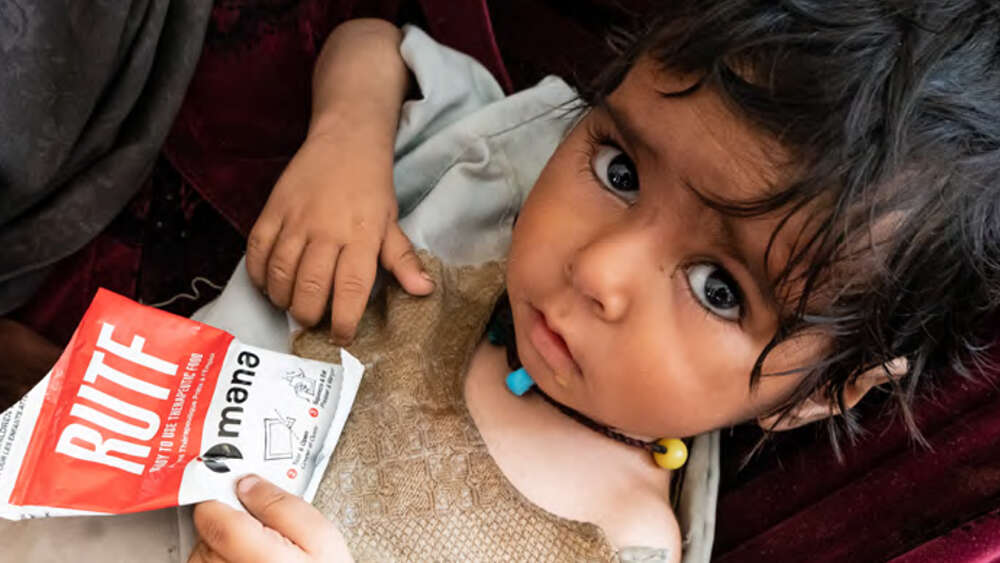World on brink of worst famine in decades: World Vision report
19 million at greater risk due to COVID-19, conflict and natural disasters
Our planet is facing a famine so devastating it could tip 10 million children into starvation – many of whom are already enduring a “living hell” in refugee camps, World Vision Australia has warned.
More than 19 million people worldwide are at risk of famine from a deadly mix of COVID-19, conflict and natural disasters, according to a new report by the international organisation.
The grim prediction equates to a 50 per cent rise in people at risk of starvation, compared with 2019. World Vision’s Double Hardship report declared this to be the worst hunger crisis in decades.
World Vision has helped more than 6.4 million people with food assistance during COVID-19, but CEO Daniel Wordsworth said aid agencies could not battle the looming crisis in the Middle East and Sub-Saharan Africa alone.
“COVID-19 has stoked a hunger crisis on a scale not seen in recent memory,” he said.
“It has heaped yet another layer of suffering on people living in conflict hotspots – many of whom are refugees and already enduring a living hell. These people have been torn from their homes by war and conflict, languishing in camps for years. And now, life just got even worse. That’s why we all need to come together to avert this new disaster in the world’s conflict hotspots. The last thing we want to see again is the tragic images of famine that came out of Ethiopia in the ‘80s – and believe me, that’s what we are facing.”
The report highlighted:
- 20 countries suffering severe food emergencies, with more than 19 million people at risk of famine. Most are in countries ravaged by conflict, including Afghanistan, Congo, Somalia and South Sudan.
- 235 million people worldwide would need lifesaving assistance in 2021 – an unprecedented increase of 40 per cent in just one year, according to UN estimates.
- COVID-19 would create an additional 121 million people going to bed hungry by the end of 2020, mostly in already crisis-affected countries, the World Food Programme (WFP) calculated.
- 9.3 million people in Syria are now food insecure (almost half the country’s population), the highest number recorded – the WFP also found.
- Around 3.3 million refugees across East Africa – 72 per cent of the total regional refugee caseload – face ration cuts of 10 to 40 per cent, exposing them to further hunger and malnutrition.
The extent of this crisis has prompted World Vision to encourage the Australian Government to create a $AU150 million aid package to prevent famine and child malnutrition in the world’s hunger hotspots. This would be new money on top of planned expenditure for 2020-21.
World Vision wants the funding to be channelled into agencies such as the UN Central Emergency Response Fund (CERF), WFP and the Australian Humanitarian Partnership to ensure swift responses to looming famines.
“I am confident Australia won’t just stand by and watch this crisis unfold. Generosity in the face of need is in our DNA.” – Daniel Wordsworth
Mr Wordsworth said COVID-19 had fuelled even greater misery for millions of children and their families. These vulnerable people battle not only displacement and conflict, but disease too – including the devastating knock-on impact of the pandemic – without access to food, health, social safety and protection systems.
“Meanwhile, those wars that have ripped families and nations apart continue to rage, in many cases fragmenting and growing, with no obvious pathways to peace in sight. It’s no surprise that, in places like Afghanistan, Mali, Syria or Somalia, many people are struggling to muster any hope at all,” he said.
“We’re deeply concerned the pandemic is tipping millions of children trapped amid conflict into a more extreme hunger crisis – and also endangering their safety, learning and wellbeing. This will have devastating consequences for their long-term physical and mental development. While the rollout of vaccines provide some hope, it is not a panacea to the aftershocks of COVID-19 and won’t provide any immediate relief.”
But Mr Wordsworth said the emerging hunger crisis had created an opportunity for Australia to step up as a humanitarian leader, just as it did during the 2011-12 food crisis in East Africa and after the 2004 Boxing Day tsunami.
“If the world doesn’t respond now, the hurt that so many children have already experienced will not be temporary. Things will be unlikely to return to ‘normal’, and millions of girls and boys will stay trapped in cycles of extreme poverty, hunger, violence and stress.”
“Unless we act now to address the pandemic’s impacts on children in the hardest-hit places, the echoes of COVID-19 will permanently scar our shared future. But I am confident Australia won’t just stand by and watch this crisis unfold. Generosity in the face of need is in our DNA.”
On top of a $AU150 million famine-prevention package, World Vision has also urged the Government to:
- Think longer term and fund three new multi-year hunger-resilience programs in conflict-affected countries (such as Afghanistan, Iraq, Mozambique, Somalia, South Sudan or Syria).
- Prioritise children’s mental wellbeing in the wake of COVID-19 and earmark 10 per cent of Australia’s 2021-22 humanitarian response budget for child protection, mental health and psychosocial support services.
- Establish a plan for Australia to meet its ‘fair share’ of humanitarian funding of at least $861 million per year.
- Reverse the 2020-21 budget decision to cut Australia’s Refugee and Humanitarian Program by 5000 places.
Email This Story
Why not send this to a friend?




